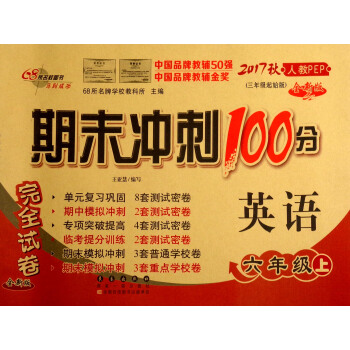

具体描述
内容简介
《石油工程专业英语》按照勘探、开发和炼制进行组织,包括12章:地质学基础、石油地质学、油层物理、渗流力学、钻井、物探、测井、油藏工程、采油工程、油田化学、炼化、HSE等内容。教材在参考国外的经典教材的基础上,融入新技术和相关研究成果,力求资讯新颖,同时按照新大纲的要求,书中还设计了填空、连线、简答、计算和答案解析等内容。《石油工程专业英语》可作为石油工程专业外语教学用书,地质资源、钻井、采油、炼制、储运方向的参考用书,同时也可作为科技人员的外文工具书。
目录
Chapter 1Fundamental Geology
Section 1��1Early Earth
1��1��1Introduction
1��1��2The Origin of the Earth
1��1��3The Early Atmosphere
1��1��4The Early Rocks
1��1��5The Early Life
Section 1��2Rocks and Minerals
1��2��1Introduction
1��2��2The Materials of the Earth
1��2��3Rocks are Made of Minerals
1��2��4Granitic Rocks
Section 1��3Facies Models
1��3��1General Principles
1��3��2Paleocurrents
1��3��3Paleohydraulics
1��3��4Environments
Chapter 2Petroleum Geology
Section 2��1The Fluid of Reservoir
2��1��1Introduction
2��1��2Natural Gas
2��1��3Oil
2��1��4Oil�瞗ield Water
2��1��5Distribution of Gas,Oil,and Water in the Reservoir
Section 2��2Migration and Accumulation of Oil and Gas
2��2��1Introduction
2��2��2Migration of Oil and Gas
2��2��3Primary Migration
2��2��4Secondary Migration and Accumulation
2��2��5The Sites of Oil and Gas Accumulating
Section 2��3The Trap
2��3��1Introduction
2��3��2Traps
2��3��3Facies Change Traps
2��3��4Unconformity and Hydrodynamic Traps
Chapter 3Seismic Exploration
Section 3��1Seismic Wave Dynamics
3��1��1Introduction
3��1��2Seismic wave characteristics
3��1��3Seismic wave propagation laws
3��1��4Seismic wave types
Section 3��2Seismic Velocities
3��2��1Introduction
3��2��2Factors affecting velocity
3��2��3Several velocities concepts
Section 3��3Seismic Works
3��3��1Introduction
3��3��2Seismic Data Acquisition
3��3��3Seismic Data Processing
3��3��4Seismic Data Interpretation
Chapter 4Petrophysics
Section 4��1Physical Properties of Reservoir Rocks
4��1��1Introduction
4��1��2Mineral Constitution of Sandstone Rock
4��1��3Pore Structure and Porosity of Reservoir Rock
4��1��4Permeability of Reservoir Rock
Section 4��2Physical Properties of Reservoir Fluids
4��2��1Introduction
4��2��2High Pressure Physical Property of Natural Gas
4��2��3High Pressure Physical Property of Crude Oil
4��2��4Aqueous Fluids
Section 4��3Percolation Mechanism of Multiphase Fluid
4��3��1Introduction
4��3��2Capillary Pressure
4��3��3Wettability
4��3��4Hysteresis
Chapter 5Fluid Mechanics
Section 5��1Fluid Properties and Pascal's Law
5��1��1Fluid Properties
5��1��2Pascal's Law
Section 5��2Flow Properties of Fluids
5��2��1The fluid state
5��2��2The continuum model of fluids
5��2��3Variables of state
Section 5��3Unidirectional and One�睤imensional Flow
5��3��1Introduction
5��3��2Nonlinear equations
5��3��3Approximate solution
5��3��4Exact solutions of the nonlinear Navier�睸tokes equations
Section 5��4Bubble Dynamics
5��4��1Introduction
5��4��2Fundamental models for cavitation
5��4��3Rayleigh�睵lesset equation
Chapter 6Drilling
Section 6��1Rotary Drilling
6��1��1Introduction
6��1��2Drilling Team
6��1��3Drilling Rigs
Section 6��2Rotary Drilling Bits
6��2��1Introduction
6��2��2Drag Bits
6��2��3Rolling Cutter Bits
Section 6��3Casing
6��3��1Introduction
6��3��2Manufacture of Casing
6��3��3Standardization of Casing
Chapter 7Well Logging
Section 7��1Electrical Well Logs
7��1��1Introduction
7��1��2Spontaneous potential (SP) Logging
7��1��3Conventional Resistivity Logs
7��1��4The laterologs(LL)
7��1��5The Microlog (ML)
Section 7��2The Sonic Logs
7��2��1Introduction
7��2��2Acoustic waves
7��2��3Measurement of the Speed of Sound (Sonic Log)
7��2��4Measurement of Sonic Attenuation and Amplitude
Section 7��3Radioactivity Logging
7��3��1Introduction
7��3��2Gamma ray log
7��3��3The Density log
Chapter 8Petroleum Production Engineering
Section 8��1Flow Principle
8��1��1Introduction
8��1��2The Inflow Performance of The Oil Well
8��1��3The Single�瞤hase Flow Performance
8��1��4The Two�瞤hase Inflow Performance
Section 8��2Oil Production Methods
8��2��1Introduction
8��2��2Natural Flow
8��2��3Gas Lift
8��2��4Rod Pump
8��2��5Rodless Lift
8��2��6Gas pump
Section 8��3Stimulation
8��3��1Introduction
8��3��2Acidizing
8��3��3Hydraulic Fracturing
Chapter 9Oilfield Chemistry
Section 9��1Drilling Fluid Chemistry
9��1��1Introduction
9��1��2Function and Properties
9��1��3Drilling Fluid System
9��1��4Drilling Fluid Additives
Section 9��2Cement Slurry Chemistry
9��2��1Introduction
9��2��2Function and Properties
9��2��3Cement Slurry System
9��2��4Cement Slurry Additives
Section 9��3Oil Displacement Mode
9��3��1Introduction
9��3��2Oil Displacement Mode System
Section 9��4Oil and Water Well Chemistry
9��4��1Introduction
9��4��2Oil and Water Well Chemistry System
Chapter 10Refinery Chemical
Section 10��1Crude Oil
10��1��1Introduction
10��1��2Crude Oil Components
10��1��3From Crude Oil
Section 10��2The Refining Process
10��2��1Introduction
10��2��2Fractional Distillation
10��2��3Chemical Processing
Section 10��3Treating and Blending the Fractions
Answers
References
精彩书摘
《石油工程专业英语》:The waters associated with oil and gas pools are called oil—field waters.Wells hat produce only water,or water with noncommercial oil and gas showings ,when drilled into a potential reservoir rock, are called dry holes, wet wells, dusters or failures.As noted previously, the lower edge or down—dip boundary of most oil and gas pools is marked by an oil water or gas—water contact or boundary of plane.The free water that bounds the pool and fills the pores below or around it is called bottom water or edge water, depending on its relation to the pool.The relationship is shown in the Figure.As oil and gas production declines,most wells produce increasing amounts of free water.This water is interstitial water, bottom water or edge water.In some pools water comes with the oil in the early stages of development, whereas in others appreciable water never comes up with the oil.Waters from overlying formations, above and separate from the oil or gas reservoir are called top waters.Waters from water—bearing formations intervening between productive formations are called intermediary waters.
……
用户评价
这本书在翻译和释义的处理上,展现出一种近乎匠人的严谨态度。我注意到,很多看似简单的技术名词,它都提供了不止一种对应的中文表述,并附上了这些表述在不同国家或不同年代的行业偏好,这对于理解跨文化交流中的技术差异至关重要。例如,对于“储层评价”中涉及的那些复杂参数的英文表达,作者似乎穷尽了所有主流石油工程规范手册的词汇,确保读者在接触到任何一份国际合同或标准时,都能迅速定位到正确的理解。此外,书中的例句设计极具实战价值,它们不是凭空捏造的、生硬的句子,而是从真实的工程报告、专利摘要中提炼出来的,语境真实、结构复杂,这极大地锻炼了我们对长难句的拆解能力,使我们能够真正“读懂”而非仅仅“翻译”那些密集的英文技术文献。
评分说实话,市面上很多专业词汇书的“专业性”仅仅停留在术语的数量上,而这本书给我的感觉是“专业深度”的体现。它对一些新兴技术词汇的收录速度和准确性令人印象深刻,比如与非常规油气开发(Unconventional Resources)相关的术语群,那些最新的压裂技术术语,它都囊括其中,而且注释非常及时,这表明编者团队紧密关注着行业的最新动向,而不是用过时的资料来敷衍读者。更值得称道的是,它在附录部分加入了一个简短的“英汉工程缩略语速查表”,这个小小的板块,在实际工作中挽救了我无数次,尤其是在快速浏览旧的钻井日志或设备清单时,能瞬间破解那些令人抓狂的首字母缩写。这种面向实际工作痛点的设计,体现了编写者深厚的行业经验和对读者需求的深刻洞察力,体现了超越教科书的实用价值。
评分这本书的排版细节,尤其是针对专业学习者的优化,是其脱颖而出的关键因素。它采用了大量的对比色和字体粗细变化来区分主词条、解释和例句,使得视觉焦点非常明确,阅读效率大大提高。在遇到一个复杂的英文术语时,读者可以迅速在大段文字中定位到核心的定义,而无需被大量的辅助信息干扰。比如,核心术语通常用粗黑字体突出,而其在不同工程阶段的引申义则用斜体标注,这种细致的视觉区分,对于需要快速检索信息的工程师来说,是极大的便利。这种对阅读体验的精细打磨,使得这本书从一本工具书升华为一种高效的学习伴侣,它不是催促你快点读完,而是引导你更高效、更准确地吸收知识,确保每一个输入的信息都能被牢固地内化到专业知识体系中。
评分这部书的装帧设计着实令人眼前一亮,那种沉稳的深蓝色调配上烫金的书名,散发着一种专业、严谨的气息,初拿到手时,就感觉它不是那种浮躁的、快餐式的读物。内页纸张的质感也相当不错,厚度适中,即便是长时间阅读也不会感到刺眼,这对于需要长时间在案头工作的工程专业学生和从业者来说,无疑是一个巨大的加分项。书本的开本设计也考虑到了便携性,虽然内容厚重,但拿在手里翻阅时,并不会有那种沉甸甸的压迫感,很适合带到图书馆或者工地现场参考。装订工艺看得出来是下了功夫的,即便是频繁翻阅核心章节,书脊也没有出现任何松动的迹象,这保证了书籍的耐用性,可以作为工具书长久地陪伴我们度过学习和工作生涯。尤其是扉页和目录部分的排版,逻辑清晰,层次分明,让人一眼就能抓住全书的结构脉络,这体现了编者在用户体验上的细致考量,绝非粗制滥造的出版物可比。
评分我特别欣赏这本书的结构逻辑构建,它似乎完全从一个初学者的认知曲线出发,循序渐进地搭建知识的阶梯。开篇对于基础地质学和工程力学相关术语的铺陈,选择了最精炼但又最核心的表达方式,避免了冗余的理论阐述,直奔工程实践中的高频词汇。随后,它巧妙地引入了钻井作业流程中的关键环节,例如定向井、水平井等复杂技术的专业词汇对比解析,这里的数据图表和流程图的配比拿捏得恰到好处,使得抽象的英文概念立刻具象化了。更妙的是,它没有止步于简单的词汇罗列,而是深入到不同语境下同一术语的细微差别,比如“completion”在不同阶段的含义演变,这种深度解析,对于准备参加国际会议或撰写技术报告的人来说,是极其宝贵的财富。这种由浅入深、由基础到前沿的知识布局,让阅读过程充满了发现和连接的乐趣,而非枯燥的记忆堆砌。
评分哈哈,买了会误导你的
评分不错
评分很合身
评分不错
评分很合身
评分很合身
评分哈哈,买了会误导你的
评分很合身
评分哈哈,买了会误导你的
相关图书
本站所有内容均为互联网搜索引擎提供的公开搜索信息,本站不存储任何数据与内容,任何内容与数据均与本站无关,如有需要请联系相关搜索引擎包括但不限于百度,google,bing,sogou 等,本站所有链接都为正版商品购买链接。
© 2025 windowsfront.com All Rights Reserved. 静流书站 版权所有














![理解与表达:汉英翻译案例讲评 [Meaning and Expression:Annotated Texts in Chinese-English Translation] pdf epub mobi 电子书 下载](https://pic.windowsfront.com/12207292/594250a3Na30a7f55.jpg)





